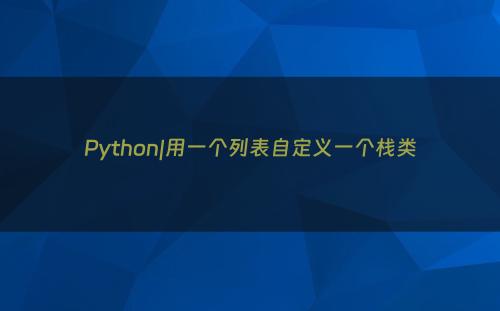栈的特点在于以后进先出的方式存取数据(不是随机存取)。
栈最典型的应用是用于函数调用。当调用一个函数时,一个存储这个函数的参数和局部问题的活动记录被压入栈中。当一个函数调用另一个函数时,这个新函数的活动记录被压入栈。当一个函数结束它的工作返回它的调用者时,它的活动记录从栈中删除。

在Python的标准库中已经实现了栈的模块化:
from Stack import Stack
stack = Stack()
for i in range(10):
....stack.push(i)
stack.pop()
while not stack.isEmpty():
....print(stack.pop(), end = " ")
output:
8 7 6 5 4 3 2 1 0
可以自定义一个类来对堆栈建模,并且使用列表来存储栈中的元素。栈类可以继承list来扩展(但也会继承不一些不需要的方法),也可以在一个自定义的Stack类中创建一个列表。
代码说明:
__elements.pop()是列表的pop()方法;
stack.pop()是自定义栈类对象stack的pop()方法;
所以如果用继承list类的思路,此方法不需重写即可使用。
output:
8 7 6 5 4 3 2 1 0
附代码:
class Stack:
....def __init__(self):
........self.__elements = []
............................# Return true if the tack is empty
....def isEmpty(self):
........return len(self.__elements) == 0
............................# Returns the element at the top of the stack
............................# without removing it from the stack.
....def peek(self):
........if self.isEmpty():
............return None
........else:
............return self.__elements[len(elements) - 1]
............................# Stores an element into the top of the stack
....def push(self, value):
........self.__elements.append(value)
....................# Removes the element at the top of the stack and returns it
....def pop(self):
........if self.isEmpty():
............return None
........else:
............return self.__elements.pop()
............................# Return the size of the stack
....def getSize(self):
........return len(self.__elements)
stack = Stack()
for i in range(10):
....stack.push(i)
stack.pop()
while not stack.isEmpty():
....print(stack.pop(), end = " ")
-End-
